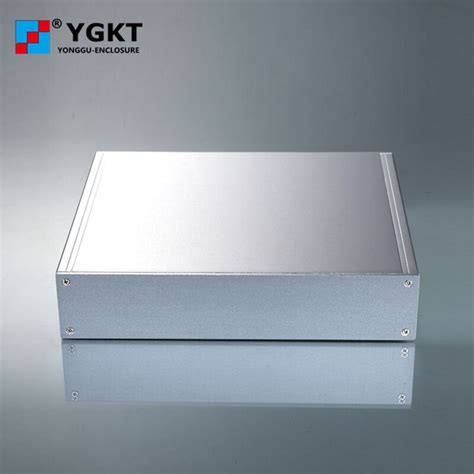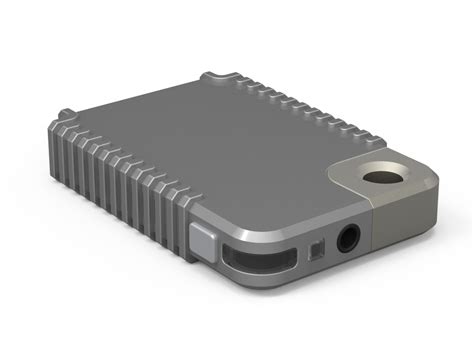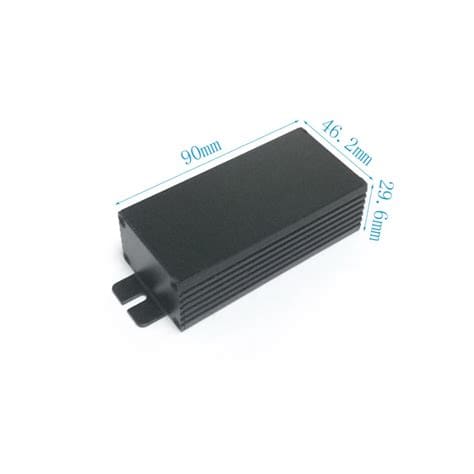Introduction to PCB Enclosures
A Printed Circuit Board (PCB) enclosure is a protective housing designed to safeguard electronic components and circuits from various environmental factors, physical damage, and electromagnetic interference. In many applications, such as industrial, military, and aerospace sectors, PCB enclosures need to be particularly rugged to withstand harsh conditions and ensure reliable operation.
The Importance of Rugged PCB Enclosures
Rugged PCB enclosures play a crucial role in ensuring the longevity and performance of electronic devices in demanding environments. These enclosures are designed to provide:
- Protection against physical damage
- Resistance to extreme temperatures
- Shielding from electromagnetic interference (EMI)
- Prevention of moisture and dust ingress
- Structural integrity under mechanical stress
Factors Contributing to PCB Enclosure Ruggedness
Several key factors contribute to the ruggedness of a PCB enclosure:
Material Selection
The choice of material is critical in determining the ruggedness of a PCB enclosure. Common materials used for rugged enclosures include:
| Material | Properties | Applications |
|---|---|---|
| Aluminum | Lightweight, strong, good heat dissipation | Industrial, automotive, aerospace |
| Stainless Steel | High strength, corrosion-resistant | Marine, chemical processing |
| Polycarbonate | Impact-resistant, lightweight, electrically insulating | Outdoor, industrial |
| ABS (Acrylonitrile Butadiene Styrene) | Strong, heat-resistant, cost-effective | Consumer electronics, industrial |
Factors to Consider When Selecting Materials
- Environmental conditions (temperature, humidity, corrosive substances)
- Mechanical requirements (impact resistance, vibration)
- Electromagnetic shielding needs
- Weight and size constraints
- Cost and manufacturing feasibility
Ingress Protection (IP) Rating
The IP rating system, defined by the International Electrotechnical Commission (IEC), classifies the degree of protection provided by an enclosure against the intrusion of solid objects, dust, and water. A higher IP rating indicates better protection.
| IP Code | Protection Level |
|---|---|
| IP54 | Protected against dust and splashing water |
| IP65 | Dust-tight and protected against water jets |
| IP67 | Dust-tight and protected against temporary immersion in water |
| IP68 | Dust-tight and protected against continuous immersion in water |
Achieving High IP Ratings in PCB Enclosures
- Proper sealing of joints and openings
- Use of gaskets and O-rings
- Careful design of cable entry points
- Selection of appropriate materials and surface finishes
Electromagnetic Interference (EMI) Shielding
EMI shielding is essential for preventing electromagnetic waves from interfering with the operation of electronic components inside the enclosure. Rugged PCB enclosures often incorporate EMI shielding features, such as:
- Conductive gaskets
- Metallic coatings or plating
- Conductive plastics
- Proper grounding and bonding
Effectiveness of EMI Shielding
The effectiveness of EMI shielding is measured in decibels (dB) and depends on factors such as:
- Material properties (conductivity, permeability)
- Frequency of the electromagnetic waves
- Thickness of the shielding material
- Aperture size and shape
Thermal Management
Rugged PCB enclosures must be designed to effectively dissipate heat generated by the electronic components to prevent overheating and ensure reliable operation. Thermal management strategies include:
- Heatsinks and heat spreaders
- Thermal interface materials (TIMs)
- Active cooling (fans, thermoelectric coolers)
- Passive cooling (natural convection, radiation)
Factors Affecting Thermal Management
- Power dissipation of electronic components
- Ambient temperature and airflow
- Enclosure material and surface finish
- Size and geometry of the enclosure
Mechanical Design and Structural Integrity
A rugged PCB enclosure must be designed to withstand mechanical stresses, such as impacts, vibrations, and shocks. Key aspects of mechanical design include:
- Wall thickness and reinforcement
- Mounting options (flanges, brackets)
- Stress distribution and load paths
- Vibration damping and isolation
Design Considerations for Structural Integrity
- Material strength and stiffness
- Fastening methods (screws, rivets, welds)
- Corner and edge reinforcement
- Compliance with industry standards (e.g., MIL-STD-810)

Testing and Certification
To ensure the ruggedness of a PCB enclosure, it must undergo rigorous testing and certification processes. Some common tests include:
- Environmental testing (temperature, humidity, salt spray)
- Mechanical testing (impact, vibration, shock)
- EMI/EMC testing
- IP rating verification
Relevant Standards and Certifications
- MIL-STD-810: Environmental Engineering Considerations and Laboratory Tests
- IEC 60529: Degrees of Protection Provided by Enclosures (IP Code)
- IEC 61000: Electromagnetic Compatibility (EMC)
- UL 50E: Enclosures for Electrical Equipment, Environmental Considerations

Case Studies
Rugged PCB Enclosure for Aerospace Application
A rugged PCB enclosure was designed for an aerospace application, where it needed to withstand extreme temperatures, vibrations, and EMI. The enclosure was made from aluminum alloy 6061-T6, with a conductive gasket for EMI shielding. It was tested to MIL-STD-810G and passed all environmental and mechanical tests.
Industrial PCB Enclosure with High IP Rating
An industrial PCB enclosure was developed for use in a harsh factory environment, where it was exposed to dust, water, and corrosive substances. The enclosure was made from polycarbonate with a special coating for chemical resistance. It achieved an IP68 rating and successfully protected the electronic components inside.

Frequently Asked Questions (FAQ)
1. What is the difference between IP65 and IP67 ratings?
IP65 indicates that the enclosure is dust-tight and protected against water jets from any direction, while IP67 provides the same dust protection but also offers protection against temporary immersion in water.
2. Can a plastic enclosure provide effective EMI shielding?
Yes, plastic enclosures can be made with conductive additives or coatings to provide EMI shielding. However, the effectiveness of shielding may be lower compared to metal enclosures.
3. How do I choose the right material for my rugged PCB enclosure?
The choice of material depends on factors such as environmental conditions, mechanical requirements, EMI shielding needs, weight and size constraints, and cost. Consider the specific demands of your application and consult with enclosure manufacturers for guidance.
4. What is the purpose of thermal interface materials (TIMs) in PCB enclosures?
TIMs are used to improve heat transfer between electronic components and heatsinks or other cooling solutions. They fill the air gaps and irregularities between surfaces, reducing thermal resistance and enhancing overall thermal management.
5. How can I ensure my PCB enclosure meets industry standards?
To ensure compliance with industry standards, work with experienced enclosure manufacturers who are familiar with the relevant standards and certification processes. They can guide you through the design, testing, and documentation required to meet the necessary criteria.
Conclusion
Designing a rugged PCB enclosure involves careful consideration of various factors, including material selection, IP rating, EMI shielding, thermal management, and mechanical design. By addressing these aspects and subjecting the enclosure to rigorous testing and certification, you can ensure that your electronic components are well-protected and able to function reliably in demanding environments.
When selecting or designing a rugged PCB enclosure, it is essential to work with experienced professionals who can guide you through the process and help you make informed decisions based on your specific application requirements. By investing in a high-quality, rugged PCB enclosure, you can minimize the risk of failures, reduce maintenance costs, and extend the lifespan of your electronic devices.

No responses yet